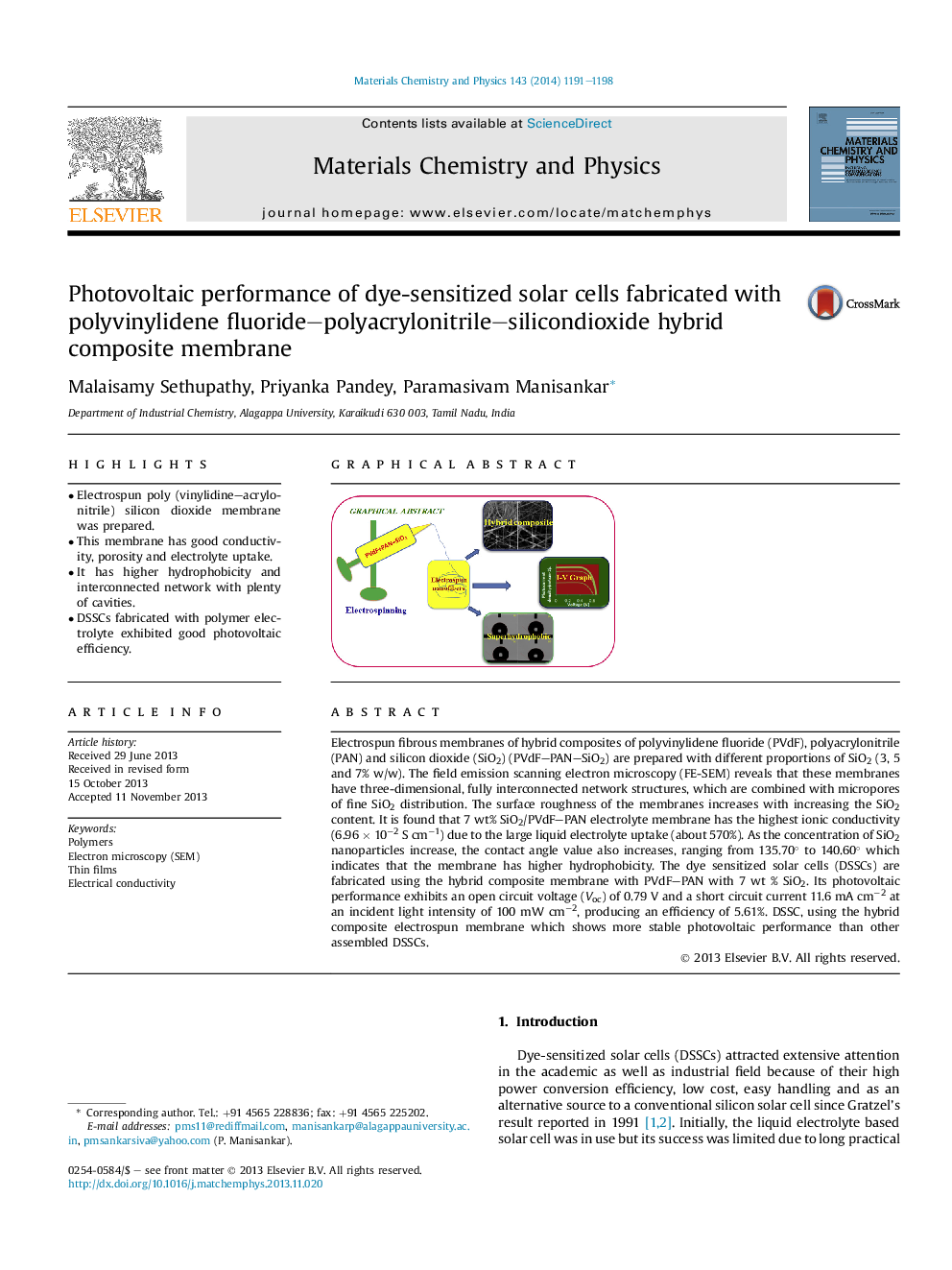| Article ID | Journal | Published Year | Pages | File Type |
|---|---|---|---|---|
| 1522233 | Materials Chemistry and Physics | 2014 | 8 Pages |
•Electrospun poly (vinylidine–acrylonitrile) silicon dioxide membrane was prepared.•This membrane has good conductivity, porosity and electrolyte uptake.•It has higher hydrophobicity and interconnected network with plenty of cavities.•DSSCs fabricated with polymer electrolyte exhibited good photovoltaic efficiency.
Electrospun fibrous membranes of hybrid composites of polyvinylidene fluoride (PVdF), polyacrylonitrile (PAN) and silicon dioxide (SiO2) (PVdF–PAN–SiO2) are prepared with different proportions of SiO2 (3, 5 and 7% w/w). The field emission scanning electron microscopy (FE-SEM) reveals that these membranes have three-dimensional, fully interconnected network structures, which are combined with micropores of fine SiO2 distribution. The surface roughness of the membranes increases with increasing the SiO2 content. It is found that 7 wt% SiO2/PVdF–PAN electrolyte membrane has the highest ionic conductivity (6.96 × 10−2 S cm−1) due to the large liquid electrolyte uptake (about 570%). As the concentration of SiO2 nanoparticles increase, the contact angle value also increases, ranging from 135.70° to 140.60° which indicates that the membrane has higher hydrophobicity. The dye sensitized solar cells (DSSCs) are fabricated using the hybrid composite membrane with PVdF–PAN with 7 wt % SiO2. Its photovoltaic performance exhibits an open circuit voltage (Voc) of 0.79 V and a short circuit current 11.6 mA cm−2 at an incident light intensity of 100 mW cm−2, producing an efficiency of 5.61%. DSSC, using the hybrid composite electrospun membrane which shows more stable photovoltaic performance than other assembled DSSCs.
Graphical abstractFigure optionsDownload full-size imageDownload as PowerPoint slide
